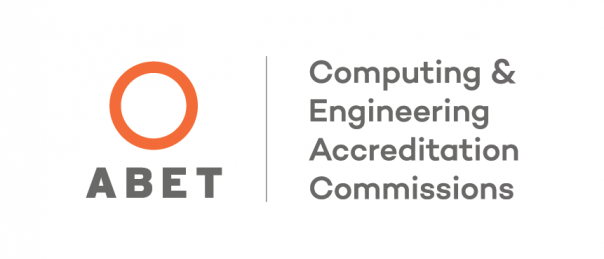Apply computer, networking or database skills to challenges facing the Internet, mobile technologies, cloud computing, cyberforensics and more.
Majors in this degree program
Accreditation
 ABET Computing Accreditation Commission: The Computer and Information Technology Bachelor of Science in CIT at Purdue University is accredited by the Computing Accreditation Commission of ABET, http://www.abet.org.
ABET Computing Accreditation Commission: The Computer and Information Technology Bachelor of Science in CIT at Purdue University is accredited by the Computing Accreditation Commission of ABET, http://www.abet.org.
Mission Statement
The Department of Computer and Information Technology educates professional practitioners and managers of information technology, accelerates information technology transfer to business and industry, and develops innovations in the application of emerging information technology through learning, engagement, and discovery by its faculty and students.
- To its students, the department provides world-class curricula that facilitate student-centered and laboratory-based learning of information technologies that are relevant to their lives and careers, valuable in terms of content and competencies, and connected to the needs of industry.
- To industry, the department produces practitioner-oriented information technology professionals and future leaders who can immediately contribute to problem solving and business results through application of information technology. Computer and Information Technology actively partners with industry through engagement that both contribute to life-long learning as well as the discovery of application of information technology solutions to business needs.
- To other educators, the department is a partner through professional service and discovery of learning that extends the frontiers of information technology education and outreach.
- To society, the department is a citizen and partner that advance the economic and social development of the State of Indiana , the nation, and the world through technology transfer .
CIT's educational objectives derive directly from the mission statement
Program Educational Objectives
Several years after graduation, CIT students will be:
-
practitioner-oriented information technology professionals
-
problem solvers who apply information technology solutions to business needs
-
future information technology leaders
-
life-long learners
Student Learning Outcomes
Graduates of the Bachelor of Science degree program in Computer and Information Technology will achieve the following learned capabilities:
- Analyze a complex computing problem and to apply principles of computing and other relevant disciplines to identify solutions
- Design, implement, and evaluate a computing-based solution to meet a given set of computing requirements in the context of the program's discipline
- Communicate effectively in a variety of professional contexts
- Recognize professional responsibilities and make informed judgments in computing practice based on legal and ethical principles.
- Function effectively as a member or leader of a team engaged in activities appropriate to the program's discipline
- Use systemic approaches to select, develop, apply, integrate, and administer computing technologies to accomplish user goals
Graduates of the Bachelor of Science in Cybersecurity degree will achieve the following learned capabilities:
- Analyze a complex computing problem and to apply principles of computing and other relevant disciplines to identify solutions
- Design, implement, and evaluate a computing-based solution to meet a given set of computing requirements in the context of the program's discipline
- Communicate effectively in a variety of professional contexts
- Recognize professional responsibilities and make informed judgments in computing practice based on legal and ethical principles.
- Function effectively as a member or leader of a team engaged in activities appropriate to the program's discipline
- Apply security principles and practices to maintain operations in the presence of risks and threats.
Enrollment Trends
| 2008-2009 | 2009-2010 | 2010-2011 | 2011-2012 | 2012-2013 | 2013-2014 | 2014-2015 | 2015-2016 | 2016-2017 | 2017-2018 | 2018-2019 | 2019-2020 | 2020-2021 | 2021-2022 | 2022-2023 | 2023-2024 | |
|---|---|---|---|---|---|---|---|---|---|---|---|---|---|---|---|---|
| West Lafayette | 444 |
432 |
395 | 364 | 359 | 402 | 467 | 547 | 589 | 499 | 798 | 861 | 916 | 1018 | 1092 | 992 |
| Anderson | - | - | - | - | - | - | - | 8 | 8 | 13 | 19 | 21 | 22 |
19 |
16 | 16 |
| Columbus | - | - | - | - | - | - | - | 18 | 29 | 27 | 35 | 40 | 29 |
22 |
14 | 14 |
| Kokomo | - | - | - | - | - | - | - | 39 | 44 | 39 | 30 | 29 | 27 |
23 |
24 |
21 |
Number of Graduates
| 2008-2009 | 2009-2010 | 2010-2011 | 2011-2012 | 2012-2013 | 2013-2014 | 2014-2015 | 2015-2016 | 2016-2017 | 2017-2018 | 2018-2019 | 2019-2020 | 2020-2021 | 2021-2022 | 2022-2023 | |
|---|---|---|---|---|---|---|---|---|---|---|---|---|---|---|---|
| West Lafayette |
80 |
108 | 106 | 86 | 85 | 87 | 96 | 86 | 108 | 121 | 159 | 166 | 181 | 220 | 225 |
| Anderson | - | - | - | - | - | - | - | - | 0 | 1 | 2 | 2 | 4 | 0 | 6 |
| Columbus | - | - | - | - | - | - | - | - | 5 | 1 | 3 | 8 | 8 | 2 | 2 |
| Kokomo | - | - | - | - | - | - | - | - | 2 | 9 | 7 | 3 | 5 | 0 | 8 |
Enrollment Trends and Number of Graduates data is sourced from Purdue’s Office of Enrollment Management's Data Digest.
